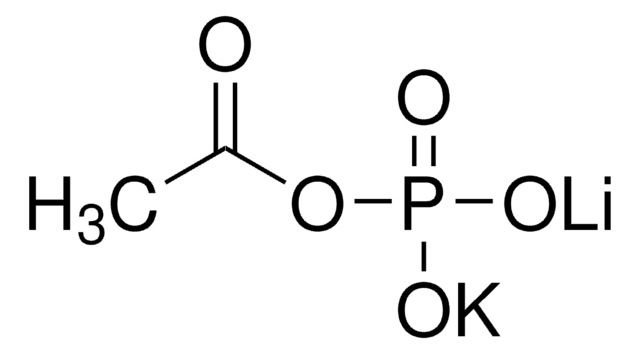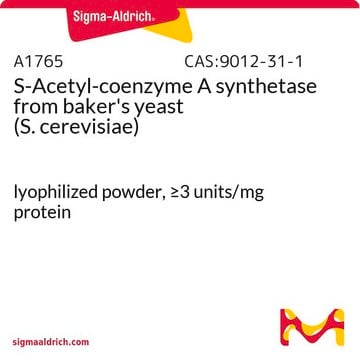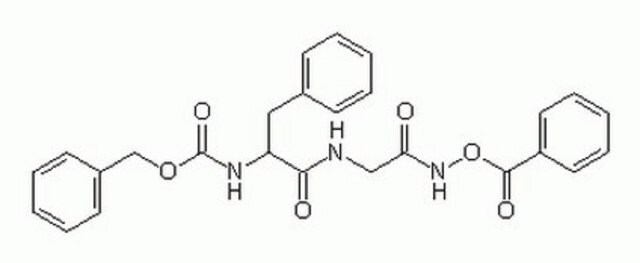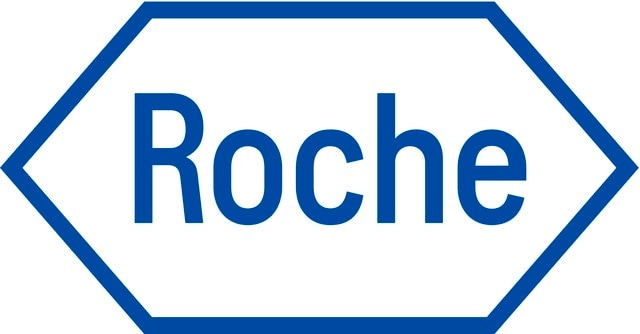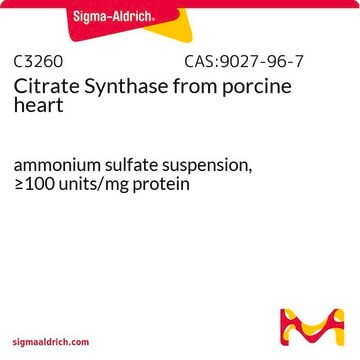추천 제품
애플리케이션
Phosphotransacetylase, from Bacillus stearothermophilus, is used to convert CoA to acetyl CoA. Phosphotransacetylase (pta) is used to study transport systems for acetate. It is used to study metabolic pathways in various bacterium.
생화학적/생리학적 작용
Phosphotransacetylase converts CoA to acetyl CoA.
단위 정의
One unit will convert 1.0 μmole of CoA to acetyl CoA per min at pH 7.5 at 30 °C using acetyl phosphate as substrate.
물리적 형태
Lyophilized powder containing potassium phosphate
신호어
Warning
유해 및 위험 성명서
Hazard Classifications
Eye Irrit. 2 - Skin Irrit. 2 - STOT SE 3
표적 기관
Respiratory system
Storage Class Code
11 - Combustible Solids
WGK
WGK 3
개인 보호 장비
dust mask type N95 (US), Eyeshields, Gloves
G D Sprott et al.
Applied and environmental microbiology, 59(4), 1092-1098 (1993-04-01)
Eleven strains of methanogenic bacteria were divided into two groups on the basis of the directionality (oxidative or reductive) of their citric acid pathways. These pathways were readily identified for most methanogens from the patterns of carbon atom labeling in
Mutants of Bacillus stearothermophilus defective in the uptake and metabolism of acetate
Philip R. Mallinder and Anne Moir
Microbiology, 137, 779-785 (1991)
Jing Huang et al.
Wei sheng wu xue bao = Acta microbiologica Sinica, 51(4), 480-487 (2011-07-30)
To study the effects of gene pta disruption on biosynthesis of L-tryptophan. The pta gene of the L-tryptophan producing strain E. coli TRTH was disrupted by Red recombination technology and a pta mutant E. coli TRTHdeltapta was constructed. Fed-batch fermentation
Sara Castaño-Cerezo et al.
Microbial cell factories, 8, 54-54 (2009-10-27)
Acetate metabolism in Escherichia coli plays an important role in the control of the central metabolism and in bioprocess performance. The main problems related to the use of E. coli as cellular factory are i) the deficient utilization of carbon
Zoltán Gregus et al.
Toxicological sciences : an official journal of the Society of Toxicology, 110(2), 282-292 (2009-05-30)
Enzymes catalyzing the phosphorolytic cleavage of their substrates can reduce arsenate (AsV) to the more toxic arsenite (AsIII) via the arsenolytic substrate cleavage in presence of a reductant, as glutathione or dithiotreitol (DTT). We have shown this for purine nucleoside
자사의 과학자팀은 생명 과학, 재료 과학, 화학 합성, 크로마토그래피, 분석 및 기타 많은 영역을 포함한 모든 과학 분야에 경험이 있습니다..
고객지원팀으로 연락바랍니다.